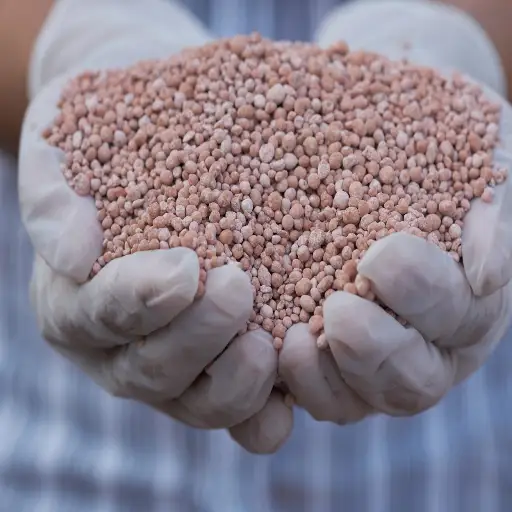Modern agriculture is an intricate science, requiring precise nutrient management to maximize crop yields and ensure food security for a growing global population. Among the essential nutrients, potassium plays a pivotal role in plant health and productivity. Potash fertilizers, the primary source of potassium for agricultural purposes, have become indispensable in supporting high-yield farming practices. This article explores the critical function of potassium in plant physiology, highlights the importance of potash fertilizers in modern agricultural systems, and examines their impact on crop quality, resistance to stress, and overall sustainability. Whether you’re a farmer, agronomist, or simply curious about the science behind agriculture, this comprehensive guide will shed light on the indispensable role of potash fertilizers in securing a robust and reliable food supply.
Understanding Potash and Its Importance
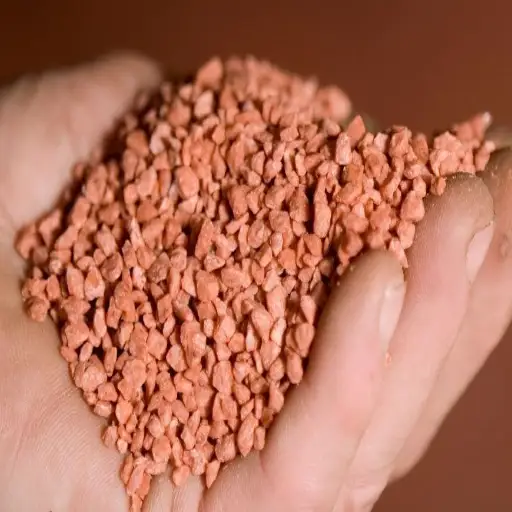
What is Potash?
Potash denotes several mined and manufactured chemicals that possess water-soluble potassium salts. It mainly consists of potassium chloride (KCl); however, other substances that qualify to be potash also include potassium sulfate (K₂SO₄) and potassium nitrate (KNO₃). Potassium, i.e., the primary constituent of potash, is an essential macronutrient along with nitrogen and phosphorus needed for plant growth and development.
The term potash originates from early methods used to create potassium carbonate by leaching wood ashes with water in large pots and evaporating wood ash solutions. In current times, potash is mainly extracted from underground ore deposits originating from the drying up of ancient seas. These deposits are then mined, processed, and refined to generate potassium-rich products for agricultural use.
The principal use of potash is as fertilizer, which largely enhances the vigor and resilience of plants. Potassium regulates water flow within plants, facilitates photosynthesis, and solidifies their cell walls, whereby the crops eventually show improved quality and yield. It is therefore necessary to apply it towards fertigation and food support of the global community, especially in intensive agricultural systems.
Types of Potash Fertilizers
Potash fertilizers are generally classified on the basis of their chemical composition and solubility, which combine to determine whether they are suited for specific crop and soil types. The most commonly used potash fertilizers include Muriate of Potash (MOP), Sulfate of Potash (SOP), and Nitrate of Potash (NOP), each having different properties and uses.
- Muriate of Potash (MOP): Due to its high potassium content (close to 60 percent), MOP is considered one of the most common potash fertilizers. It is cheaper and available abundantly, and is suited for a wide range of crops and soils. However, because of its high chloride content, it may not have its benefits for chloride-sensitive crops like tobacco, Citrus, or particular vegetables. In large-scale farming and intensive agricultural systems, however, MOP finds its preference due to its cheapness and huge efficacy.
- Sulfate of Potash (SOP): SOP, or potassium sulfate, furnishes potassium and sulfur nutrients vital for crop growth. It benefits particularly high-value chloride-sensitive crops, since it does not supply chloride but rather sulfur that enhances protein synthesis and the general health of plants. Although it is more costly than MOP, SOP is used for fruits, vegetables, tea, and ornamental plants where the quality and profitability of the product justify the cost.
- Nitrate of Potash (NOP): Nap combines potassium with nitrate nitrogen, thus providing two major macroelements. It is of great use in fertigation and foliar application in crops that need nutrients available instantly. Thanks to its extreme solubility in water, permitted uptake of nutrients is made efficient, especially in the disciplines of controlled-environment agriculture and hydroponics. Its major applications are horticultural crops like tomatoes, cucumbers, and peppers.
Each potash fertilizer type is used by itself for certain crop types and soils, depending on economic justifications. Choosing the right fertilizer without a doubt guarantees sustainable and optimized agricultural yield that hugely contributes to world food security.
The Role of Potassium in Plant Growth
Potassium is a vital macronutrient, necessary for the development of the health of the plant and its productivity. It is required in our physiological processes, such as photosynthesis, enzyme activation, and water regulation within the plant cell. Potassium regulation embraces several vital functions, such as maintaining osmotic pressure in the cells, which further affects the opening and closure of stomata. Meanwhile, potassium regulation in water use efficiency allows plants to better endure drought stress or alternatively to optimize water uptake and retention.
On the other hand, potassium is directly important for carbohydrate synthesis and transportation. Moving sugars and starch from leaves into other plant parts to support the development of fruits, vegetables, seeds, and roots is crucial, and by doing so, potassium results in better final products of increased size, weight, and nutritional content. Potassium further builds the cell walls, increasing resistance capacity against pests and diseases; thus, it is essential for healthy crop production in both conventional and intensive farming.
Potassium deficiency, hence, shall cause agronomic and economic implications. Common potassium deficiency symptoms in plants include chlorosis along leaf margins, inhibited growth, poor root development, and a loss of resistance against stresses such as drought or pathogens. So, for sustainable agriculture and ensuring crop productivity, potassium content must be adequate in the soil, or plant fertilization undertaken through defined practices.
Benefits of Potash Fertilizers for Crop Health

Enhancing Crop Yields with Potassium
Potassium fulfills several functions in optimizing crop production by regulating physiological and biochemical processes within plants. This macronutrient is an important factor in the photosynthetic process, whereby it activates enzymes involved in the conversion of sunlight into chemical energy. It further facilitates water movement within the plant tissues and assists in strengthening growth processes by facilitating the transport of nutrients and carbohydrates.
According to research, potassium protects plants from environmental stress, including drought, salinity, and temperature extremes. This happens because potassium regulates stomatal opening and closing, which minimizes water loss and maintains cell turgor pressure under stress. Besides, potassium increases cell-wall strength, thereby improving structural integrity and reducing susceptibility to disease-causing pathogens.
Increased potash fertilization in soil management improves both crop yield and crop quality. Studies carried out on cereals and tubers have shown yield increases of about 15% to 30% when potassium is applied in balanced amounts with nitrogen and phosphorus in fertilization. These results reaffirm the importance of potassium in ensuring sustainable and profitable agricultural production.
Improving Soil Health through Potash Application
Potash, the critical source of potassium, forms the backbone of soil maintenance, promoting healthy plant growth and sustaining agricultural development. If applied in balanced ratios and quantities, potash increases the cation exchange capacity of the soil, ensuring nutrients like calcium and magnesium remain available for the plants. This is becoming especially important for intensively farmed lands, where nutrient depletion takes center stage as a concern. Potassium also aids in water uptake by plants under drought conditions vital feature with the growing onset of extreme weather events induced by climate change.
Recently, some research discovered the synergies when potash is integrated into the production system. For example, through potash application along with crop rotation and organic matter, soil structure is improved to sustain microbial activity and defend against soil compaction. Legume and cereal trials show that these integrated crop production methods improve yield and also help in soil carbon sequestration in the long run. This presents the varied nature of potash, apart from being just a nutrient, as a force for regenerative agriculture.
Further advances in precision agriculture have led to the more efficient and targeted application of potash, reducing wastage and leaching to the environment. Soil testing, remote sensing, and equipment for variable-rate application constitute major tools enabling such precise and data-based decisions on potash management. Studies have shown that such precision approaches can cut potassium fertilizer rates by 20% to 30% while maintaining crop yields. Through applying these advanced management techniques, farmers are able to achieve fertilization at reduced costs while safeguarding the environment, thus giving new hope to a truly healthy agricultural system that measures productivity along with ecological consciousness.
Specific Crop Responses to Potassium Fertilizers
Crop responsiveness to potassium fertilizers is critically variable, depending on soil type, crop type, climatic conditions, and existing nutrient profiles. For example, potassium is required for fiber crops such as cotton, which improves fiber strength, length, and uniformity. Likewise, the concentration of potassium largely determines sugar content in sugarcane and beet, while the yield and quality of sucrose are influenced.
The cereal crops, such as maize, wheat, and rice, also undergo considerable improvement in yields and stress tolerance when adequate potassium is applied. It was found that potassium enhances the photosynthetic function in these crops by helping the stomata open, increasing water use efficiency, and lessening drought stress. Likewise, potassium in fruits and vegetables is directly related to the increase in fruit size, better color, and good taste, as well as to the decrease of physiological disorders, e.g., blossom-end rot in tomatoes.
Optimum potassium application, coupled with thorough soil testing and well-planned fertilization schedules, produces the best crop growth results. Consequently, composite potassium application and site-specific nutrient management can constitute precision farming that maximizes nutrient use efficiency and minimizes environmental footprints.
Applications of Potash in Agriculture
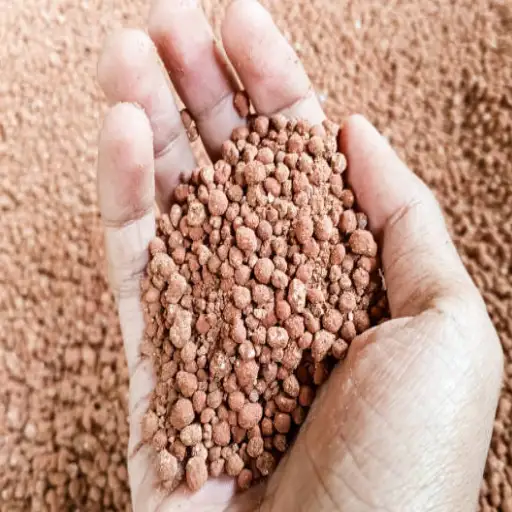
Application Methods for Potash Fertilizers
The application of potash fertilizers must be aligned to the special crop requirements and soil conditions so as to optimize nutrient absorption. Potash may be applied early as a basal dressing during the preparation of soil, thus ensuring the fast supply of potassium for seedling establishment. This involves the even broad-casting of potash fertilizer over the field and a superficial incorporation into the soil via plowing or harrowing. This incorporation helps to avoid any losses through runoff or volatilization and instead allows efficient uptake by plant roots.
The other common option is split application, which involves giving potash at various intervals throughout the crop’s development. This will facilitate the exact supply of nutrients to match the phase when the potassium demand is highest during the crop cycle. The competitive phases include fruiting and tuber formation. Split application can be top-dressing or fertigation; the latter will be more suited for systems under irrigation. Fertigation delivers dissolved potash fertilizers directly to the root zone, improving bioavailability while avoiding losses.
More specialized techniques, such as foliar feeding, are applied when there is a need for quick potassium application, mostly as remedial action on symptom observation of deficiencies. Foliar spraying of soluble potash formulations guarantees quick absorption and instantaneous physiological response from the plants. It is, however, more of an adjunct strategy rather than a total alternative to soil-applied potash. Hence, a mixture of these methods is recommended depending on the crop type, growth stage, and soil type to ensure maximized crop yield and optimum nutrient management.
Timing and Rates of Potash Application
Potash application timing and rate are critical factors affecting crop productivity directly. Potash is highly demanded during rapid growth and development as it is involved in photosynthesis, enzyme activation, osmotic regulation, etc. For most crops, this corresponds to the period between vegetative growth and early reproductive stages. Application of potash during the early stages will help the plants develop strong frameworks and tolerate stress.
Rates of application of potash depend upon several factors such as potassium levels in the soil, the cropping system chosen, the expected yields, and regional climatic considerations. Ideally, a soil test should be done to assess potassium availability on a baseline to enable appropriate nutrient management recommendations. For example, general recommendations for corn may be anywhere from 60-120 Kg of K2O per hectare, but this may vary considerably depending upon the particular environmental conditions and soil characteristics.
Split applications are normally advised to ensure that K is maximally available, especially in sandy soils prone to leaching. An initial base application at planting is followed by top-dressing during critical growth stages, all the way through the potassium requirements of the crop are met during its life cycle. Advanced methods, involving a slow-release potash fertilizer or fertilizers applied through fertigation, are increasingly being promoted as the means to precisely fine-tune nutrient delivery to actual crop demand. These modern methods form a brilliant synergy with data from precision agriculture tools to maximize nutrient use efficiency while cutting down on environmental losses.
Production Processes of Potash Fertilizers
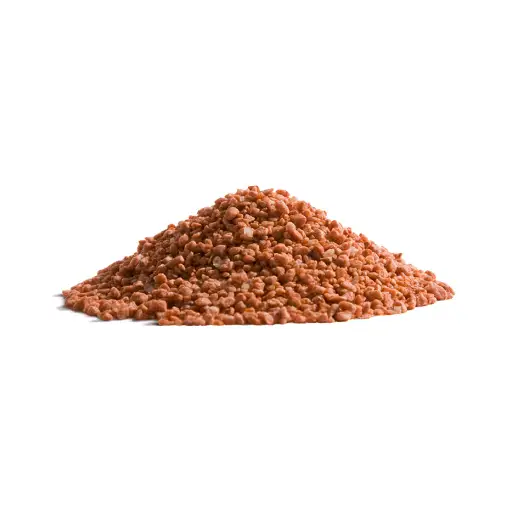
Mining and Processing Potash
The production of potash fertilizers starts with the extraction of potash-rich minerals from geological reserves, mainly through conventional underground mining or solution mining by evaporation from solar ponds. Conventional underground mining, or mechanical mining, extracts potash ore from deposits buried deep in the Earth’s crust, usually located within sedimentary basins. A very efficient way to mine potash using this method is through advanced continuous mining machines working in very large volumes to ensure stability.
During solution mining, a chemical procedure is carried out to inject water or brine into potash ore deposits to dissolve the soluble minerals. This will be pumped to the surface as a solution, where potash is separated and purified by evaporation and crystallization methods. This method is best used to extract potash from deposits that are buried deep and hard to access without requiring huge excavation work.
Solar evaporation occurs in places with high temperatures-frequently deserts, where potash-rich brines are concentrated in shallow ponds, either naturally or artificially. What remains from intense evaporation is the crystallized potash, which is harvested and later refined.
The potash extracted is subjected to further refinement processes such as flotation and drying in order to separate impurities and obtain the desired grade for agricultural or industrial usage. The use and advancement of modern technology and automation are thereby enhancing the efficiency of all these processes, while simultaneously reducing waste and impact upon the environment. While each method has its advantages, the mining procedure is selected on the basis of the depth of the deposit, availability of resources, and economics of the project.
Sulfate of Potash Production Techniques
Sulfate of Potash (SOP), the premium potassium fertilizer, is typically made by one of two main processes-the Mannheim process or brine-derived methods that are natural. The Mannheim process is the reaction of potassium chloride (KCl) with sulfuric acid (H2SO4) at high temperatures inside a furnace, thus producing sulfate of potash and a hydrochloric acid (HCl) byproduct. It produces consistent quality but requires large energy inputs due to controlled heating.
The extraction of natural brines uses potassium-bearing brines found underground in reservoirs or saline lakes. These brines pass through a process of either solar evaporation or mechanical processing to crystallize potassium sulfate. With the improvements of filtration, membrane technologies, and vapor compression, the method has been made more energy efficient and environmentally sustainable.
Promising recent developments in the sector are evident-from implementing low-carbon technologies for reducing carbon emissions, using data-drive methods such as process simulation and optimizations, and monitoring in real time for improved product quality controls, to maximize operational efficiency this is all in line with increasing demand all over the world for high-efficiency fertilizers, based on sustainable agricultural practices.
Quality Control in Potash Fertilizer Manufacturing
Potash fertilizer manufacturing has to go through critical quality control to ensure the product is consistent, safe, and compliant with regulatory standards. Advanced analytical methods such as XRF spectroscopy and AA spectroscopy are employed through the production process to monitor elemental composition with the utmost precision. This way, manufacturers can control the percentages of potassium, chlorine, and other key impurities tightly so that the product meets nutrient-grade specification requirements.
Besides, real-time monitoring systems integrated with modern process control software evaluate operating performance continuously. Sensors and automation levels are integrated in-line to detect moisture levels, granulation uniformity, and particle size distribution, parameters that highly influence the fertilizer functions. Any deviations in these parameters start automated intervention; otherwise, any variability would have stood to waste.
While maximizing product quality, the data-oriented approach thus also helps optimize resource utilization, including lower energy consumption and lesser by-product generation step forward toward sustainability goals and cost efficiency. By strengthening these quality control systems, one can ensure that potash fertilizers assist in agricultural productivity while meeting global standards for quality and environmental impact.
Environmental Impact of Potash Fertilizers
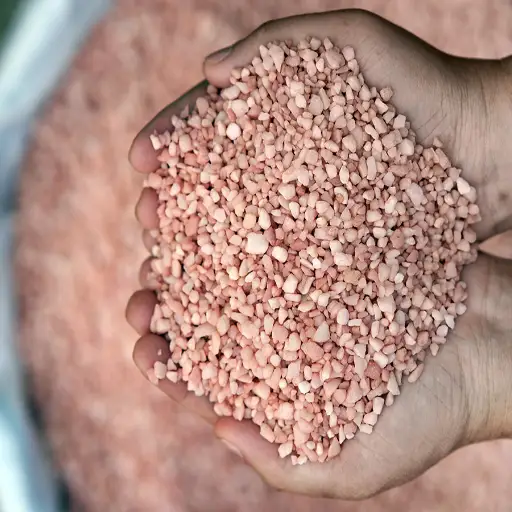
Assessing the Environmental Footprint
The environment-related impact of potash fertilizers mainly concerns their production, distribution, and application. Production requires high-energy input, most often resulting in the generation of carbon dioxide (CO2). The mining operations themselves also cause havoc to the local ecosystems and water regimes, so rigorous environmental management procedures have to be enforced to minimize ecological disruption. Potash transport via the global supply chain further adds to its carbon footprint as it involves various levels of fuel consumption and emissions.
When potash fertilizers are applied in soils with nutrient deficiencies, they generally carry a very low risk of leaching in contrast to nitrogen fertilizers, because the potassium ion is strongly retained by soil constituents. However, improper application or overapplication by soils may trigger negative changes in nutrient imbalances in the soil, which in turn may affect soil health and its productivity in the longer term. Henceforth, the ground application of fertilizers should be calculated by precision agricultural techniques that allow the monitoring of rates being applied so as not to degrade the environment.
New technologies and methods in the production of potash fertilizers, incorporating the use of renewable energies in production activities and further development in environmentally friendly mining practices, surely offer possibilities to lessen environmental impacts. Furthermore, performing an LCA on a widespread basis within the industry would supply a sound knowledge base for emissions, resource use, and environmental consequences, enabling stakeholders to quantify and mitigate the ecological footprint of potash.
Mitigating Negative Impacts of Potash Use
Precision agriculture provides an entirely new range of remedies to mitigate adverse impacts to the environment from potash fertilizers. Technologies like soil testing, satellite imagery, and GPS-guided equipment give farmers the ability to inject potash fertilizer optimally, depositing nutrients in precisely those areas that need them, lest they become over-applied, potentiating runoff into water bodies, the principal cause of eutrophication and water quality degradation.
In addition, controlled-release fertilizers could be employed for further optimization of nutrient delivery, allowing for potash to be steadily released over time in response to the plant’s demand. This would decrease nutrient losses and increase efficiency. Cover crops and buffer strips planted around agricultural fields, on the other hand, have proven to be useful for trapping excess nutrients and preventing them from leaching into ecosystems.
Equally important are advances in research and development directed at new potash formulations having improved solubility properties, thus lessening their environmental mobilization. Policies encouraging sustainable practices, along with farmer education programs on an ongoing basis, contribute immensely to establishing a harmonious balance between high-yield crop production and sustainable stewardship of the environment.
References
Frequently Asked Questions (FAQ)
Q: What is potash fertilizer, and what are its main components?
A: Potash fertilizer primarily consists of potassium compounds, with the most common forms being potassium chloride and potassium sulfate. These compounds are essential for improving soil fertility and enhancing crop nutrition, particularly for high-yielding crops.
Q: How does potash fertilizer affect soil salinity?
A: Potash fertilizer can influence soil salinity levels due to its salt content. While it provides essential nutrients for plants, excessive application can lead to increased soil salinity, which may affect the osmotic potential of the soil and ultimately impact crop growth.
Q: What is the significance of the NPK ratio in potash fertilizer?
A: The NPK ratio in fertilizers indicates the percentage of nitrogen (N), phosphorus (P), and potassium (K) they contain. For potash fertilizer, the potassium component is crucial for plant nutrition, promoting overall health and disease resistance in crops, particularly sensitive crops like vegetables and fruits.
Q: How do crops respond to potash fertilizer?
A: Crops respond positively to potash fertilizer as it helps in chlorophyll production, enhances foliage growth, and contributes to better water retention in the soil. This leads to increased productivity and healthier plants, especially under optimal growing conditions.
Q: What are the environmental safety concerns associated with potash fertilizer?
A: While potash fertilizer is generally considered cost-effective and beneficial for crop nutrition, its application must be managed carefully to avoid potential negative impacts on soil and water quality. Excessive use can lead to soil salinity issues and affect the surrounding ecosystem.
Q: How does potash fertilizer contribute to disease resistance in crops?
A: Potash fertilizer enhances disease resistance in crops by improving plant health and vigor. Adequate potassium levels in plants help strengthen cell walls and improve overall resilience, making them less susceptible to diseases and adverse growing conditions.
Q: What is the role of potash fertilizer in replenishing soil nutrients?
A: Potash fertilizer plays a crucial role in replenishing essential nutrients in the soil, particularly potassium, which is vital for plant growth and development. Regular application helps maintain soil fertility and ensures that crops receive the necessary nutrients for optimal growth.



